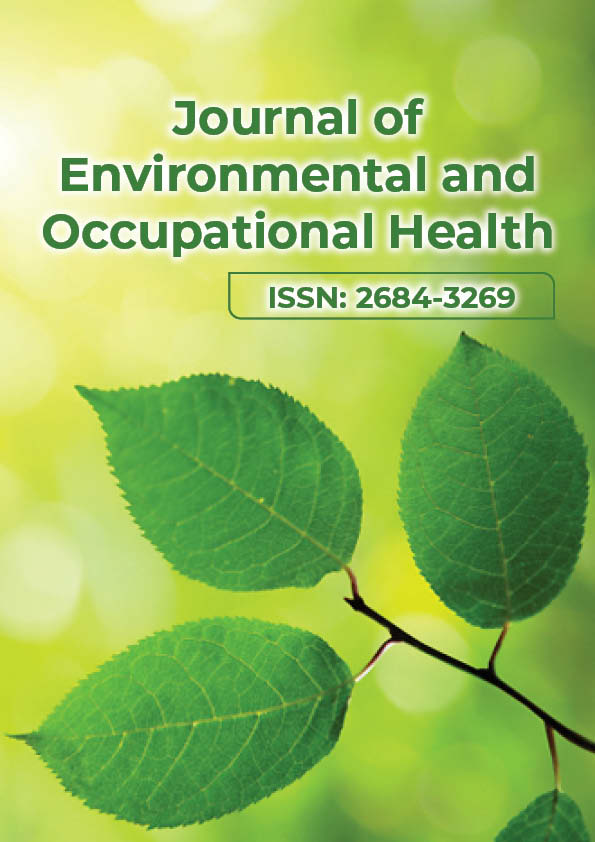Commentary - Journal of Environmental and Occupational Health (2023)
The Role of Ecosystems in Sustaining Life on Earth
Bedasa Gidisa*Bedasa Gidisa, Department of Earth and Environmental Sciences, Bahria University, Islamabad, Pakistan, Email: gididasa185@gmail.com
Received: 20-Mar-2023, Manuscript No. JENVOH-23-94021; Editor assigned: 23-Mar-2023, Pre QC No. JENVOH-23-94021 (PQ); Reviewed: 10-Apr-2023, QC No. JENVOH-23-94021; Revised: 17-Apr-2023, Manuscript No. JENVOH-23-94021 (R); Published: 24-Apr-2023
Description
An ecosystem refers to a community of living organisms, along with their non-living environment, that interact with one another in a specific geographical location. It is an intricate network of relationships that plays a vital role in maintaining the balance of nature. The concept of the ecosystem is essential because it helps us understand the natural world and how human activities affect it. Ecosystems are diverse, and they exist in various sizes, ranging from a small pond to an entire forest. The components of an ecosystem include plants, animals, microorganisms, water, air, soil, and other abiotic factors. These components are interconnected, and any change in one element can have a cascading effect on the others. Ecosystems have several functions that are crucial to sustaining life on Earth. One of the most important functions is the production of oxygen through photosynthesis, which is carried out by plants. This process involves the conversion of carbon dioxide and water into oxygen and glucose, which is used by plants as a source of energy. Oxygen is essential for the survival of all animals, including humans, who breathe it in to sustain life. Ecosystems also play a crucial role in regulating the Earth’s climate. They absorb and store carbon dioxide, which is a greenhouse gas that contributes to global warming. Trees, in particular, are vital in this regard as they absorb carbon dioxide during photosynthesis and store it in their tissues. The removal of forests, therefore, has a significant impact on the climate, as it reduces the Earth’s capacity to regulate carbon dioxide levels. Ecosystems also provide several services that are vital for human well-being. For instance, they provide us with food, medicine, and raw materials for building and manufacturing. Many of the fruits, vegetables, and grains that is consumed are derived from ecosystems. Similarly, several medicines are derived from plant and animal species that exist in ecosystems. The natural resources that are extracted from ecosystems include timber, minerals, and oil. Ecosystems also provide several non-material benefits, such as recreation and cultural services. Many people visit natural areas, such as forests and national parks, for recreational purposes, such as hiking and camping. These activities provide opportunities for people to connect with nature and improve their physical and mental well-being. Similarly, ecosystems have significant cultural value, as they form an integral part of the cultural heritage of many indigenous communities. Despite the many benefits that ecosystems provide, they are under threat from various human activities. For instance, deforestation, overfishing, and pollution have had a significant impact on many ecosystems worldwide. These activities have caused a decline in biodiversity, which is the variety of living organisms that exist in an ecosystem. Biodiversity is essential because it helps to maintain the balance of nature and provides a range of ecological services. Another major threat to ecosystems is climate change, which is caused by human activities, such as burning fossil fuels and deforestation. Climate change has a significant impact on ecosystems, as it alters temperature and precipitation patterns, causing changes in plant and animal distributions. It also increases the frequency and intensity of extreme weather events, such as hurricanes and droughts, which can have a severe impact on ecosystems. To protect ecosystems, it is essential to adopt sustainable practices that minimize the impact of human activities. Sustainable practices involve using natural resources in a way that ensures their availability for future generations. For instance, sustainable forestry practices involve harvesting trees in a way that ensures the regeneration of the forest. Similarly, sustainable fishing practices involve harvesting fish in a way that ensures their population remains sustainable. Another way to protect ecosystems is through conservation efforts. Conservation efforts involve protecting natural areas, such as national parks and wildlife reserves, from human activities that can damage them.
Copyright: © 2023 The Authors. This is an open access article under the terms of the Creative Commons Attribution NonCommercial ShareAlike 4.0 (https://creativecommons.org/licenses/by-nc-sa/4.0/). This is an open access article distributed under the terms of the Creative Commons Attribution License, which permits unrestricted use, distribution, and reproduction in any medium, provided the original work is properly cited.





